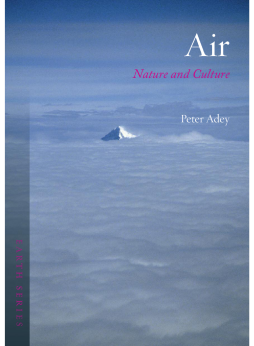
Additional Information
Book Details
Abstract
Outside of yoga class, we don’t pay too much attention to the air we take in every day. Long one of the essential elements to life on earth—from the atmospheric composition that gave life to the coal-forming forests some three hundred million years ago to the air that fuels our most important technologies today—we think little of its incredible properties. In this innovative cultural and scientific history, Peter Adey takes stock of the great ocean of air that surrounds us, exploring our attempts to understand, engineer, make sense of, and find meaning in it.
Adey examines how humans have managed and manipulated air as a natural resource and, in doing so, have been taken to the limits of survival, brought to high-altitude mountain peaks, subterranean worlds, and the troughs of new moral depths. Going beyond how vital air has been to our philosophical, scientific, and technological pursuits, he also reveals the way that the artistic and literary imagination has been lifted through air and how, in air, cultures have learned to express and inspire each other. Combining established figures such as Joseph Priestley, John Scott Haldane, and Marie Curie with unlikely individuals from painting, literature, and poetry, this richly illustrated book unlocks new perspectives into the science and culture of this pervasive but unnoticed substance.
“Air drifts delightfully over a wide range of subjects, never dwelling on any for too long but reveling in the connections and cultural context of our relationship with air. It is also a physically beautiful volume, full of oil paintings and architectural diagrams, wind tunnels and prehistoric dragonflies. Adey’s writing style is elegant—he addresses complex issues without slipping into jargon and is able to inject excitement into the subject without the text becoming stylized or distracting. . . . It is [his] ability to show us different perspectives and build new connections between ideas that enables Adey to turn ever-present, everyday air into something strange and magical.”
— Lancet
“How do you write a cultural and scientific history of something that is usually invisible and completely taken for granted? Adey has accepted the challenge and attempts to make sense of air and the ways it has shaped our physical and technological development. . . . The author effortlessly merges geography with social history and scientific theory and explains, for example, how the growth of towns and cities was closely linked to man’s sudden harnessing of air.”–
— Geographical Magazine
“Adey is skilled in multidisciplinary analysis and chooses his subjects carefully. In doing so, he follows in the footsteps of many of the people he studies: he renders air visible, thinkable; he exposes it to the possibility of study. . . . Adey has much in common with one of his subjects: French scientist Jules Etienne Marey, who used smoke and water vapor to make air visible as objects (planes, balloons) moved through it. His work resulted in stunning photographic prints. Adey has done with text (and one hundred superb, startling illustrations) what Marey did with smoke: he has produced results not only useful but beautiful, written in a language with the agility and grace to match his subject’s complexity.”
— Criticism
“An excellent exploration of how air has been represented in the arts for centuries.”
— The Biologist
“Air has always been essential to life and to our philosophical, scientific, and technological pursuits. In this richly illustrated, informative book one discovers its incredible properties.”
— Western Morning News
“In vivid detail, Adey reveals how we have managed to view air simultaneously as our prime source of misery and as the cure for our miseries; to make air our technological and artistic playground and then abuse it as our dumping ground; and—ignoring the fact that our species evolved in this rich, warm mixture of gases and shouldn’t expect to do any better than that—to persist in our attempts to improve and ‘condition’ air. A wonderfully written and designed book.”
— Stan Cox, author of Losing Our Cool: Uncomfortable Truths About Our Air-Conditioned World
Peter Adey is professor of human geography in the Department of Geography at Royal Holloway University of London.
